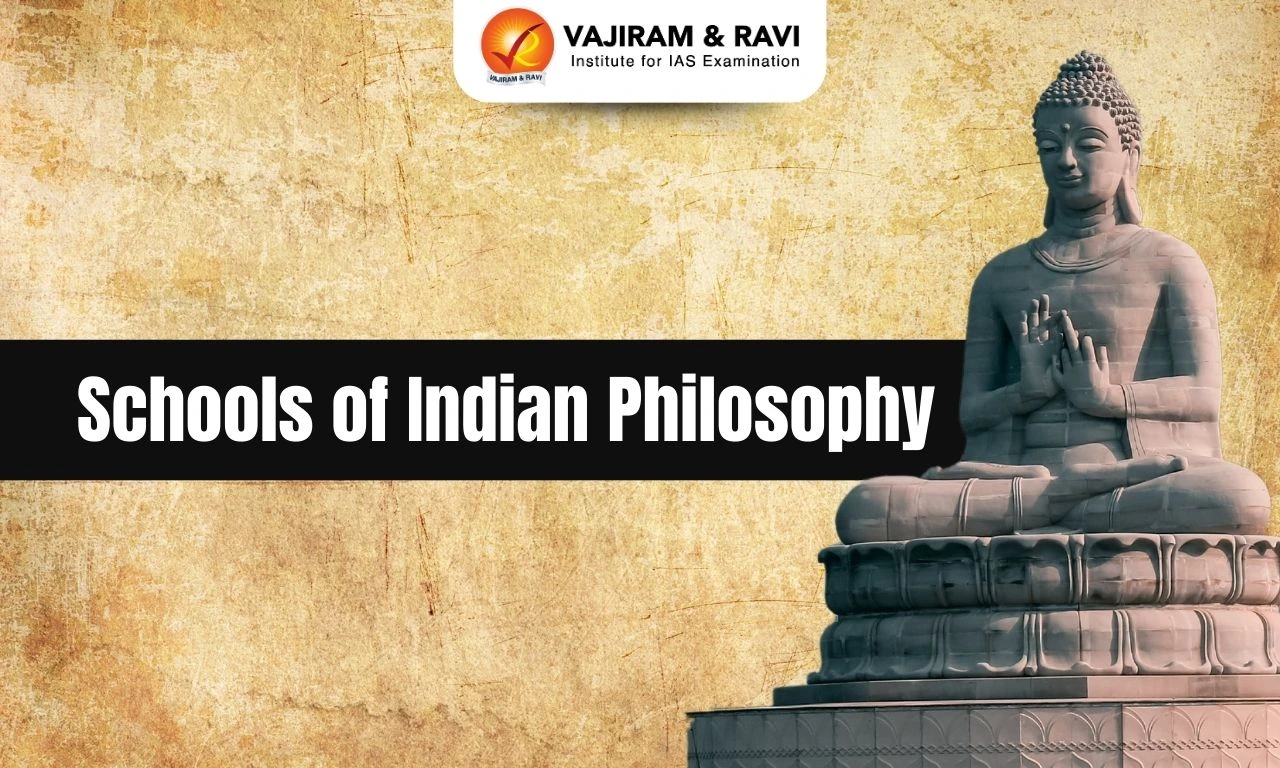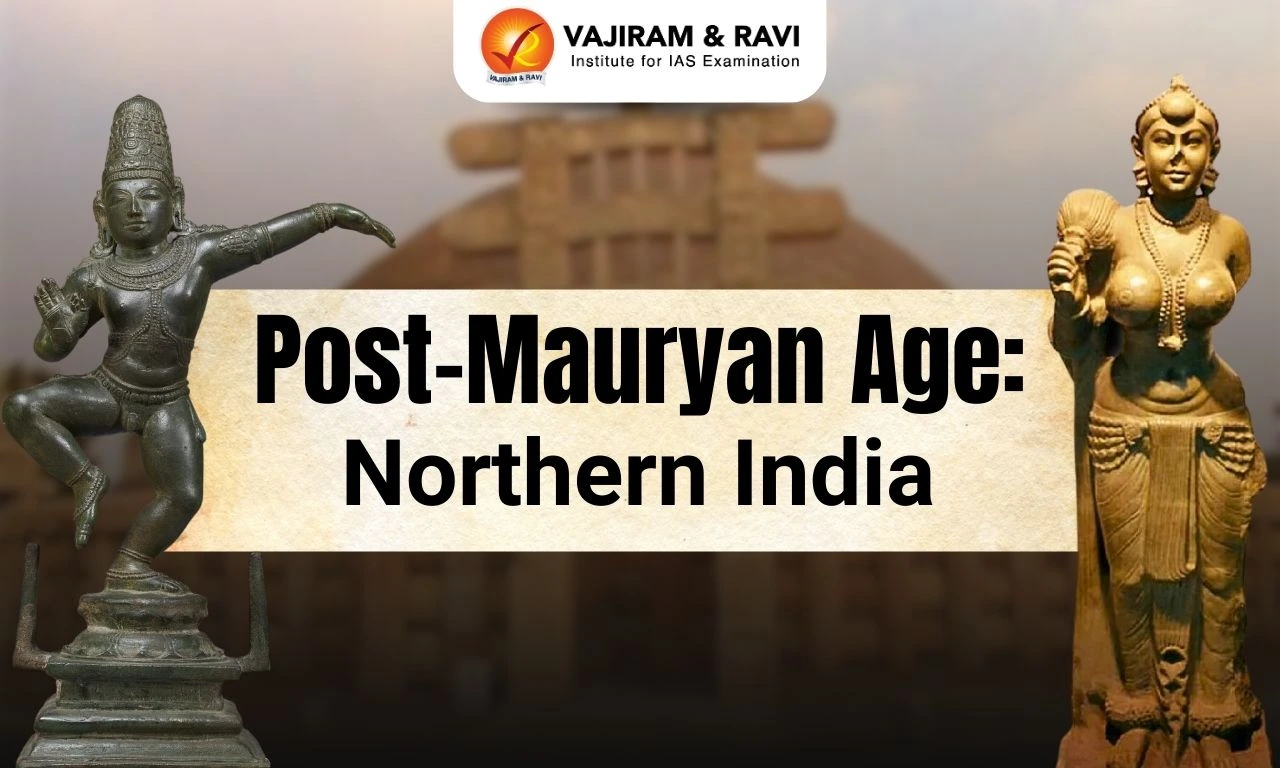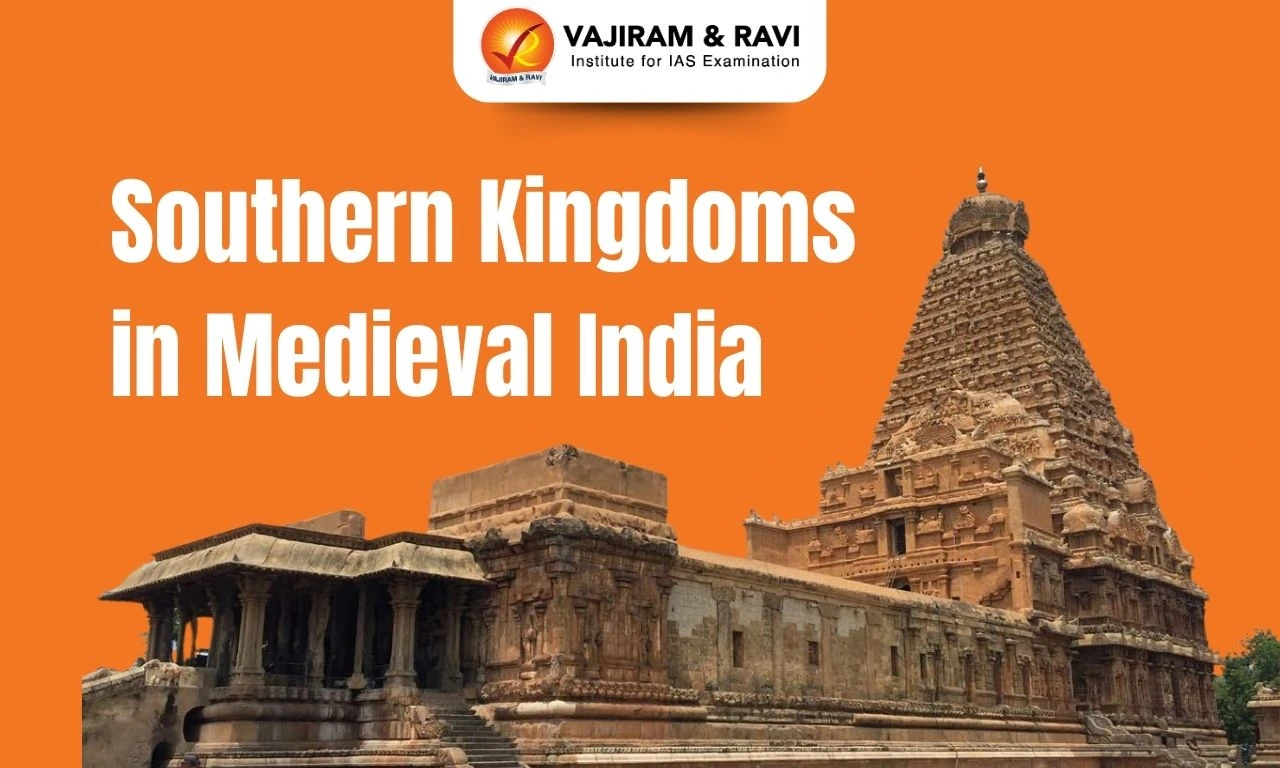Indian philosophy encompasses several philosophical traditions that originated in the Indian subcontinent, including Hindu, Buddhist, and Jain philosophy. They include both orthodox (Astika) systems, such as the Nyaya, Vaisheshika, Samkhya, Yoga, Purva-Mimamsa (or Mimamsa), and Vedanta schools of thought, and unorthodox (nastika) systems, such as Buddhism and Jainism. The book Sarva Darsana Samgraha, written by Sri Madhavacariya, contains the quintessence of a few systems of thought that evolved in ancient India.
Indian philosophical thoughts have been dealing with various philosophical aspects, significant among which are the nature of the world (cosmology), the nature of reality (metaphysics), logic, the nature of knowledge (epistemology), ethics, and the philosophy of religion.
Concepts of Indian Philosophy
Indian philosophy has been designated as ‘darsana’, generally translated as philosophy, but it means intuitive vision. The intuitive vision consists of wisdom about reality and the inner and outer secrets of human life. The interpretations of such wisdom form the basis of philosophical inquiry about metaphysical doctrines, logical truths, ethical codes and religious practices.
- Concept of Punarjanam: According to Hindu theories of reincarnation or rebirth, individuals repeatedly reincarnate, pass through many cycles of births and deaths, and live in numerous bodies as they evolve from simple organisms to complex beings and finally into humans.
- The cycle of rebirth ends when they achieve perfection and 'Moksha' (liberation).
- Concept of Rina: Rina, meaning debt, is related to the sense of obligation of a man to his duties and to ensure continuity in tradition. The three major types of debts are Guru Rina, Pitru Rina and Deva Rina. These debts in life have to be repaid by a man to attain moksha ( liberation).
- Major schools agreed that man should strive for the fulfilment of four goals:
- Artha: Economic means or wealth
- Dharma: Moral life
- Kama: Emotional fulfilment, Pleasure
- Moksha: Liberation
Types of Schools in Indian Philosophy
The schools of Indian Philosophy are broadly categorised as Heterdox and Orthodox Schools:
- The Vedic scripture is an ancient treasure trove that exemplifies the Vedic systems' cultural heritage as well as their religio-philosophical aspects.
- It contained both ritualistic and philosophical materials.
- A philosophical system like Purva Mimamsa directly developed their doctrines from the ritualistic portion, and other schools of Vedanta built up their philosophical system from the Upanishads, the philosophical part of the Vedas.
- Generally, Indian philosophical systems are classified as orthodox (Astika) and heterodox (Nastika) systems based on acceptance or rejection of the Vedic authority.
- The philosophical schools that accept the Vedic authority are Nyaya, Vaisesika, Samkhya, Yoga, Mimamsa and Vedanta.
- However, Carvaka,Jainism and Buddhism do not accept Vedic authority.
Orthodox School of Indian Philosophy
This school believed that Vedas were the supreme revealed scriptures that held the secret to salvation.
- They never questioned the Vedas' authenticity.
- They take the ancient Vedas as their source and scriptural authority.
- The main Hindu orthodox (astika) schools of Indian philosophy were codified during the medieval period of Brahmanic-Sanskritic scholasticism.
- They had six Shada Darshana sub-schools: Samkhya (or Sankhya), Yoga, Nyaya, Vaisheshika, Mimamsa and Vedanta.
Samkhya School
| Founder: Kapil Mani | Core Philosophy: It postulates that everything, in reality, stems from Purusha (self or soul or mind) and Prakriti (matter, creative agency, energy). |
|
- This is the oldest school of philosophy. - Samkhya's tendency of thought pervades all the literature of ancient India, including the Srutis, Smritis and Puranas. - According to tradition, the first work of the Samkhya School is the Samkhya-sutra. - The Samkhya is a dualistic realism philosophy. - Theory of Causation: The Samkhya metaphysics, especially its doctrine of Prakriti, rests mainly on its theory of causation, known as satkarya-vada. - It accepts only three types of knowledge (pramana):
|
|
Yoga School
| Founder: Patanjali | Core philosophy: It postulates that one can achieve salvation by combining meditation and physical application. |
|
- Yoga acknowledges God's existence as a teacher and guide. - View of Patanjali: Yoga does not mean union but the spiritual effort to attain perfection through controlling the body, senses and mind and through right discrimination between Purusa and Prakrti. - Patanjali's Yoga sutra is divided into four sections:
- Yoga is the practical path of realising the theoretical ideals of Samkhya Philosophy. - The prescribed eight sadanas to achieve mukti or freedom are:
|
|
Nyaya School
| Founder: Akshpaad Gautam | Core philosophy: They believe in the technique of logical thinking to achieve salvation. |
|
- Nyaya is an atomic pluralist and logical realist system. - It acknowledges four distinct sources of true knowledge:
- Theory of Knowledge: Knowledge or Cognition is defined as apprehension or consciousness. They hold that knowledge reveals both the subject and the object; they are not the same as knowledge. - Concept of God: God is the ultimate cause of the world's creation, maintenance and destruction.
|
|
Vaisheshika School
| Founder: Kanada | Core philosophy: All objects in the physical universe are reducible to a finite number of atoms. Brahman is regarded as the fundamental force in these atoms that causes consciousness. |
|
- Vaisesika develops metaphysics and ontology. - Views on God: The Vaisesika theory is substantially similar to the Nyaya's. - According to the Vaisheshika school, the laws of Karma guide this universe. - They contended that the Universe was created by the five main elements known as Dravya (fire, air, water, earth, and sky). - The Vaisesika system is considered conducive to studying all systems. - Its primary goal is to deal with categories and reveal its atomistic pluralism. - All knowledge must necessarily point to an object of knowledge, which is referred to as a Padartha. |
|
Mimamsa School (Purva Mimamsa)
| Founder: Jamini | Core Philosophy: Mimamsa philosophy is the analysis of interpretation, application and use of the text of the Samhita and Brahmana portions of the Veda. |
|---|---|
|
- Mimamsa is an etymological term that means "resolution of some problem through reflection and critical examination." Mimamsa developed the ritualistic aspect of the Vedas. - The Jaiminiya sutra is the work that established the principles of this school. - Sabaraswami wrote the significant commentary (bhasya) for this work. - The most famous and important commentators are Kumarila Bhatta and PrabhakaraMisra, who founded the two schools of philosophy named after them – the Bhatta School of Mimamsa and the Prabhakara School of Mimamsa. - Apadeva wrote an elementary work on the Mimamsa known as Mimamsaanyayaprakasa. - Mimamsa accepts five non-perceptual sources of knowledge. They are: anumana, upamana, sabda, arthapatti (postulation) and anupalabdhi (non-perception). |
|
Vedanta School
| Founder: Vyasa | Core Philosophy: Brahm is the reality of life, and everything else is unreal. They equalise atma and Brahm, and if a person attains the knowledge of the self, he would automatically understand Brahm and achieve salvation. |
|
- The term Vedanta means in Sanskrit the “conclusion” (anta) of the Vedas, - It applies to the Upanishads and the school that arose from the study (Mimamsa) of the Upanishads. - They believed in the theory of punarjanama. - The text Brahmasutra of Badrayana formed the basis of this philosophy.
- The three fundamental Vedanta texts are Upanishads, Bhagavadgita and Brahma-sutras. - The main traditions of Vedanta are:
|
|
Heterodox School of Indian Philosophy
The Sramana movement created a wide range of heterodox beliefs.Schools that do not accept the authority of Vedas are, by definition, unorthodox (nastika) systems.
Heterodox schools form a group of systems opposed to the excess of ritualism, spiritualism, world-negating idealism, oppressive clericalism and inhuman casteism.
The five subdivisions of Heterodox schools are:
- Buddhist philosophy
- Jainphilosophy
- Charvaka School or Lokayata philosophy
- Ajivika Philosophy
- Ajnana Philosophy
Charvaka School or Lokayata Philosophy
| Founder: Brihaspati | Core Philosophy: Direct perception is the only means of establishing and accepting the truth. |
|
- Carvaka etymologically means ‘sweet-tongued’. - According to Carvakas, perception (Pratyaksa) is the only source of valid knowledge, and they hold that nothing exists except what the five senses perceive.
- The Carvaka denied the soul or Atman as a surviving or transmitting entity. - Carvakas did not believe in the theory of karma; accordingly, they rejected the notion of rebirth after death. - According to them, the Universe consists of only four elements (fire, earth, water and air). - View on God: They did not believe in any metaphysical reality beyond matter; it logically follows that they rightly consider that traditional concepts of God, religion and life after death are “pure fictions, sheer imaginations of fevered brains”.
- Source of philosophy:Tattvopaplavasimha of Jayarasi Bhatta - Mention in other works:
|
|
Ajivika School
| Founder: Goshala Maskariputra | Core Philosophy: There is no reason or cause for the depravity of things; they deprave without reason or cause. There is also no cause for the purity of beings; they become pure without reason or cause. |
|
- Ajivikas believed that every being had a soul (Atman). - The Digha Nikaya, Anguttara Nikaya, Samyutta Nikaya, Sutrakritanga-sutra, Shilanka's commentary on the Sutrakritanga-sutra, Bhagavati-sutra, Nandi-sutra, and Abhayadeva's commentary on Samavayanga-sutra are primary sources of knowledge on these. - Makkhali denies sin, or adharma, and human freedom in determining the fate of the species. - The Ajivika school is well-known for its Niyati ("Fate") doctrine of absolute fatalism or determinism. - The oldest descriptions of the Ajivika fatalists and their founder, Gosala, can be found in ancient Buddhist and Jaina scriptures. |
|
Ajnana School
| Founder: Sanjaya Belatthiputta | Core Philosophy: It was impossible to obtain knowledge of metaphysical nature or ascertain the truth value of philosophical propositions, and even if knowledge was possible, it was useless and disadvantageous for final salvation. |
|
- They have been recorded in Jain and Buddhist texts.
|
|
| Other Related Posts | |
| Schools of Indian Philosophy | Ajivika Sect |
| Yoga | Charvaka Philosophy |
Last updated on December, 2025
→ Check out the latest UPSC Syllabus 2026 here.
→ Join Vajiram & Ravi’s Interview Guidance Programme for expert help to crack your final UPSC stage.
→ UPSC Mains Result 2025 is now out.
→ UPSC Notification 2026 is scheduled to be released on January 14, 2026.
→ UPSC Calendar 2026 is released on 15th May, 2025.
→ The UPSC Vacancy 2025 were released 1129, out of which 979 were for UPSC CSE and remaining 150 are for UPSC IFoS.
→ UPSC Prelims 2026 will be conducted on 24th May, 2026 & UPSC Mains 2026 will be conducted on 21st August 2026.
→ The UPSC Selection Process is of 3 stages-Prelims, Mains and Interview.
→ UPSC Result 2024 is released with latest UPSC Marksheet 2024. Check Now!
→ UPSC Prelims Result 2025 is out now for the CSE held on 25 May 2025.
→ UPSC Toppers List 2024 is released now. Shakti Dubey is UPSC AIR 1 2024 Topper.
→ UPSC Prelims Question Paper 2025 and Unofficial Prelims Answer Key 2025 are available now.
→ UPSC Mains Question Paper 2025 is out for Essay, GS 1, 2, 3 & GS 4.
→ UPSC Mains Indian Language Question Paper 2025 is now out.
→ UPSC Mains Optional Question Paper 2025 is now out.
→ Also check Best IAS Coaching in Delhi
Schools of Indian Philosophy FAQs
Q1. What is Indian Philosophy?+
Q2. What is India's oldest philosophical school?+
Q3. Which school of Indian Philosophy takes the Vedas as their spiritual authority?Which school of Indian Philosophy takes the Vedas as their spiritual authority?+
Q4. What is the difference between Orthodox and Heterodox schools?+

















